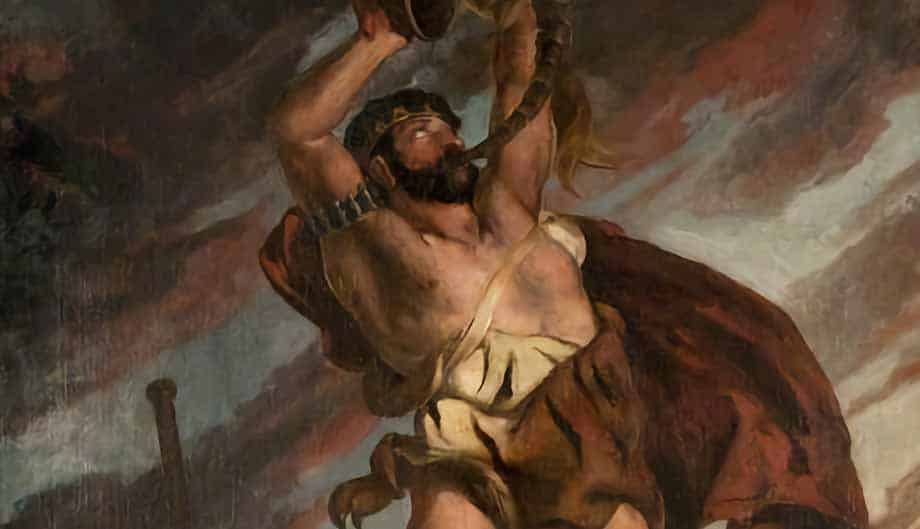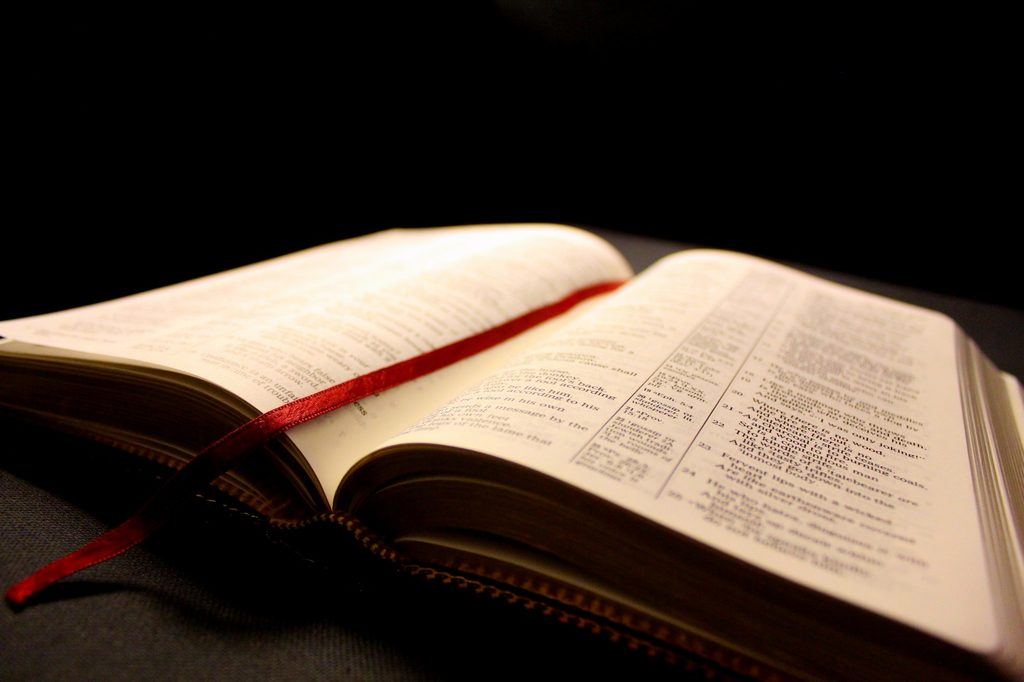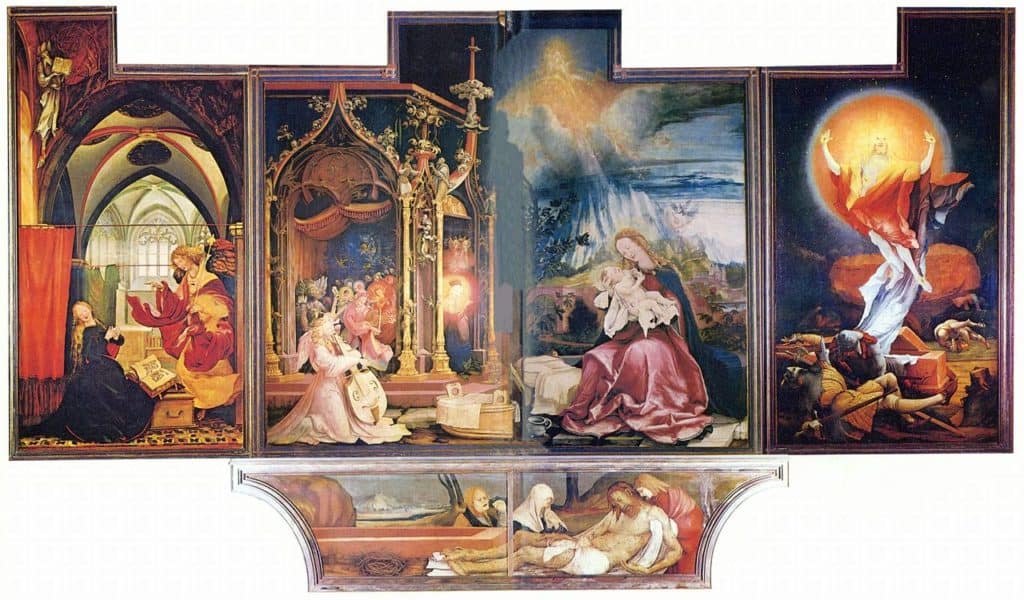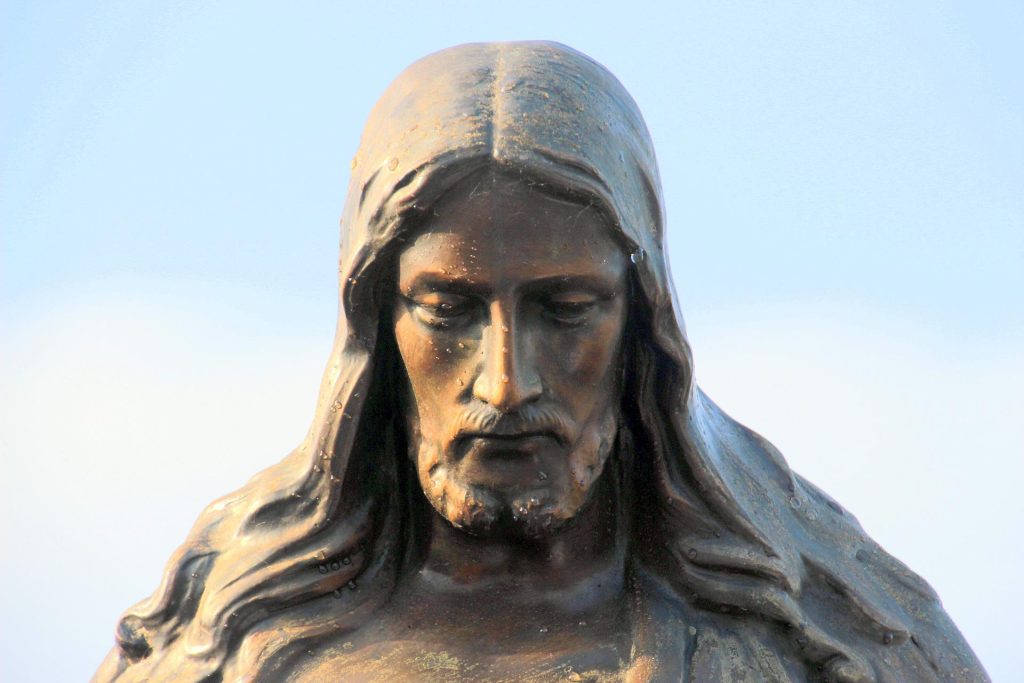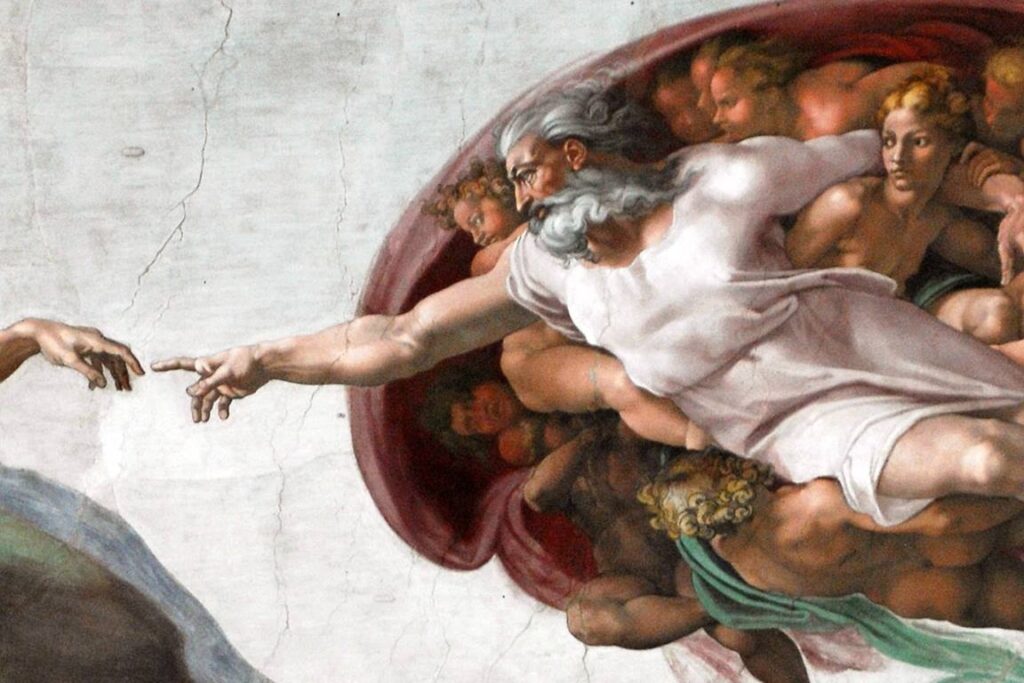Throughout biblical history, certain figures stand out as enigmatic and powerful, with stories that continue to captivate the curiosity of the masses. One such character is Nimrod, described as a “mighty hunter” and “powerful king” in Genesis, the first book of the Christian Bible. Nimrod’s story is interwoven with intrigue and ancient traditions. Most notable is the claim that he married Semiramis, a woman from ancient Babylonian legend. Many claim Semiramis was Nimrod’s mother. Is this just a case of mistaken identity? Or do the implications of this go deeper than first meets the eye?
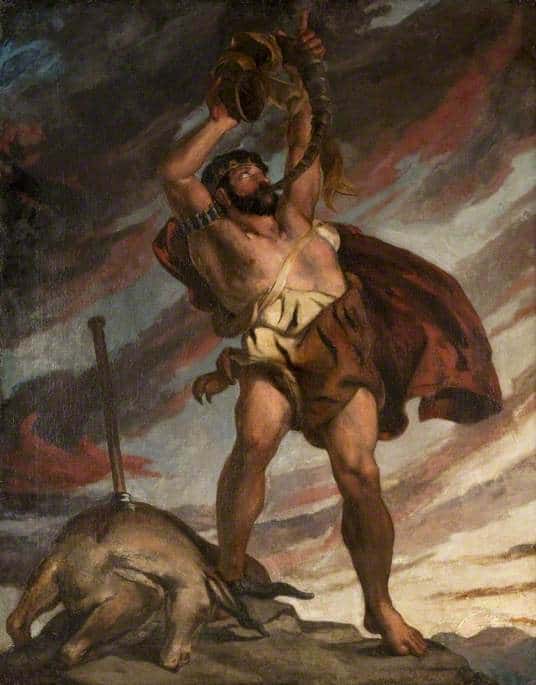
Who Was Nimrod?
It is important to look at the Bible and see what it has to say about Nimrod. This basis is the most important source for many Christians and establishes an authoritative reference point for discussion of what other texts add to the account.
Nimrod is one of the Bible’s well-known figures. However, his name appears only three times in the Bible, and most of the information about him is found in Genesis 10:8-12. Difficulties also arise since there are many nuances in the passage, and the original language supports several different interpretations.
Interpretative Difficulties
The first thing to understand is that not all Christians believe everything in the Bible is recorded factual history. Interpretive paradigms can be much more complicated and nuanced than that. For some, passages such as those that mention Nimrod are addressing spiritual, not historical truths.
Family Tree
The primary interpretive issue for those who take a more literalist bent has to do with where to place Nimrod in the biblical family tree. Genesis includes several genealogies. After the Great Flood recorded in Genesis 6-8, Noah’s family are the only ones who have survived. Genesis 10:8 states that Cush, Noah’s grandson by way of Ham, fathered Nimrod, making Nimrod the great-grandson of Noah. However, Genesis 10:7 lists off the sons of Cush, and Nimrod is not listed there. This has led many to theorize that Nimrod is not the son of Cush, but a more distantly related descendant. It is also possible that Nimrod was not listed in verse seven because he is singled out in verse eight.
While the Bible does not explicitly name Nimrod’s mother, some traditions and interpretations might refer to her as the ‘Mother of Nimrod,’ adding another layer to the exploration of his family tree.
Nimrod’s Character
Another interpretive challenge is how the text paints Nimrod’s character vs extrabiblical tradition. Genesis 10:9-12 describes him as a “mighty hunter before the Lord” and a “mighty warrior on the earth.”These descriptors not only portray him as an adept and skilled hunter but also highlight that he was probably a ruler. Extrabiblical tradition links Nimrod to the ruler who commissioned the Tower of Babel, an account which is recorded in Genesis 11. This association paints Nimrod in a different light, as a man who was defiant against God and eager to make a name for himself.
Throughout these conjectures, it is important to remember, however, that there is only so much that can be inferred from the text. Whether one interpretation is correct, or another, many Christians do not put as much weight to interpretations that do not stand on scripture.
Nimrod in the Ancient World
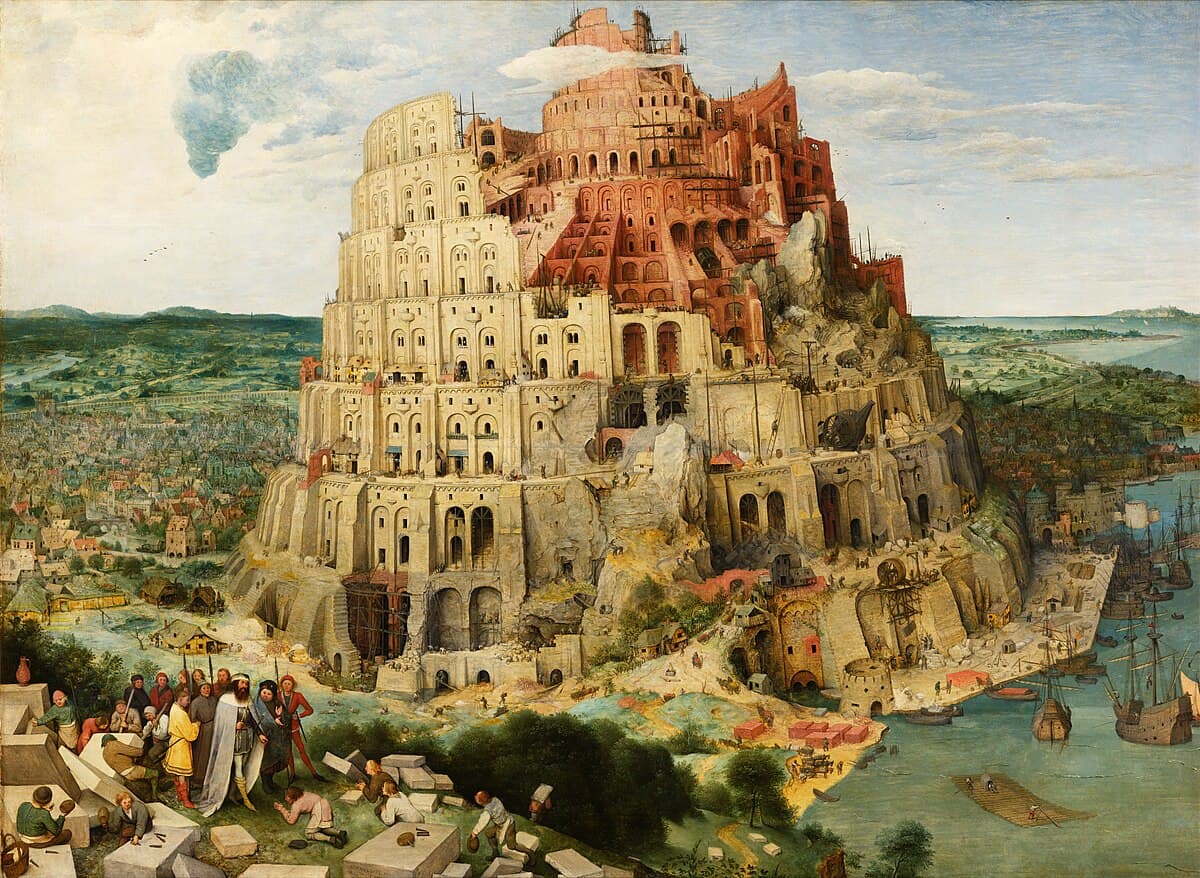
The ancient Near Eastern context is vital in comprehending Nimrod’s place in the biblical account. His life unfolded in ancient Babylon, a city that would later become synonymous with grandeur, wealth, and power. The Euphrates River, flowing through this region, played a pivotal role in the growth and development of nearby civilizations, including Assyria, which is called the land of Nimrod in Micah 5:6. The city of Babylon itself became an iconic symbol of human achievement, and hubris with the construction of the Tower of Babel, a project often attributed to Nimrod.
Ancient traditions and texts celebrate Nimrod as a mighty warrior and the founder of Babylon and Nineveh. Many people give him credit for starting the world’s first empire. His reputation as a powerful and influential ruler extends beyond the biblical narrative and excites the imaginations of later authors.
Nimrod’s most enduring achievement lies in his legendary founding of the great city of Babylon. This city, strategically located along the fertile banks of the Euphrates River, would go on to become one of the most illustrious and influential urban centers of its time. The foundation of Babylon marked a critical moment in the development of human civilization, as it laid the groundwork for the emergence of a mighty empire that would shape the course of history for centuries to come. Ancient Babylonian laws and cultural achievements became a model for many nation-states that followed.
Nimrod and the Tower of Babel
Many believe Nimrod was the force behind the construction of the Tower of Babel. Christians often believe this was a key turning point in human history as well as a marvel of engineering and architecture that has captured the imagination of scholars and theologians for millennia. The biblical narrative in the book of Genesis describes the tower as a colossal edifice intended to reach the heavens. This ambitious project served as a symbol of human unity and achievement. It is a testament to the ambition and hubris of humanity, as people sought to elevate themselves to the status of gods.
The story of the building of the Tower of Babel serves as a cautionary tale in the Bible. It illustrates the consequences of human pride and defiance. God’s response to the tower’s construction was to confuse the languages of those involved, which scattered people across the earth. For some Christians, this story explains the emergence of different languages in human culture.
The Tower of Babel narrative highlights the divine intervention in human affairs and the limits of human aspirations. Nimrod’s alleged role as the mastermind behind this project reveals his desire for power, unity, and the elevation of his city and people to unprecedented heights.
Nimrod as a Mighty Hunter
Nimrod’s reputation as a “mighty hunter” brings to mind the image of a skilled and relentless tracker.
In the ancient world, hunting was a significant activity that displayed a person’s bravery, physical abilities, and dominance over the natural world.
No wild animal was specifically detailed in the Bible as hunted by Nimrod. However, considering the wildlife of the ancient Near East, it is conceivable that his exploits might have included pursuing formidable creatures such as wild boars. These animals, known for their strength and ferocity, presented a significant challenge to even the most skilled hunters. As a result, the wild boar has entered into the mythos of Nimrod as a great hunter.
The term “mighty hunter” may have also served as a general description of his exceptional hunting abilities which importantly by extension reference his strength and leadership qualities. It is just as possible that this phrase’s use does not refer to the actual hunting of animals but rather aims to signify his greatness.
Different names associated with Nimrod
The Bible and most historical and religious texts primarily know Nimrod by that name. However, many believe that in some ancient traditions and variations, other names or titles may have referred to Nimrod. Here are a few variations and alternative names linked to Nimrod:
-
“Nimrod the Hunter”: This is the most common designation found in the Bible, emphasizing his hunting skills and prowess.
-
“Ninus”: In ancient Assyrian and Greek traditions, Ninus is a character many believe could be Nimrod. Ninus is associated with the legendary foundation of the city of Nineveh.
-
“Baal”: In some mythologies and religious traditions, Nimrod has been linked with the deity Baal, although this association is not found in the Bible.
-
“Marduk”: In Mesopotamian mythology and Babylonian traditions, Nimrod has been associated with Marduk, a major god in their pantheon.
-
“Gilgamesh”: In the Epic of Gilgamesh, an ancient Mesopotamian epic, some scholars have drawn parallels between the character of Nimrod and the hero Gilgamesh, although they are distinct figures in their respective narratives.
These alternative names and associations are often derived from later texts instead of direct references in the biblical text.
Nimrod’s Connection to Semiramis
Delving deeper into Nimrod’s story, as told by these other texts, we encounter a theory that adds layers of complexity and intrigue: the assertion that he married his mother, Semiramis.
Semiramis was a prominent figure of historical importance and mythological intrigue for ancient Mesopotamia and surrounding regions. Her existence is well-documented in various historical records, including ancient texts and inscriptions, attesting to her reign as a powerful queen of Assyria and Babylon. These records highlight her accomplishments as a ruler, her military conquests, and her architectural projects.
This captivating theory that she was Nimrod’s wife has been popularized and expounded upon by various authors, with Alexander Hislop’s work The Two Babylons being the most notable source of these ideas. When exploring this theory from a Christian perspective, it’s important to examine the evidence and implications with discernment.
Hislop’s work, published in the 19th century, delves into the connections between ancient Babylonian religious practices and certain aspects of Roman Catholicism. Central to Hislop’s thesis is the idea that pagan traditions and beliefs from ancient Babylon influenced the practices of the Roman Catholic Church and were incorporated into them. This claim sparks considerable debate and discussion.
The heart of Hislop’s theory lies in the identification of Semiramis as the Queen of Heaven, a prominent figure in various ancient religious traditions, including those of Babylon. Hislop argues that Semiramis, as the Queen of Heaven, was both the mother and wife of Nimrod, thereby establishing a mother-son cult that played a significant role in ancient religious practices.
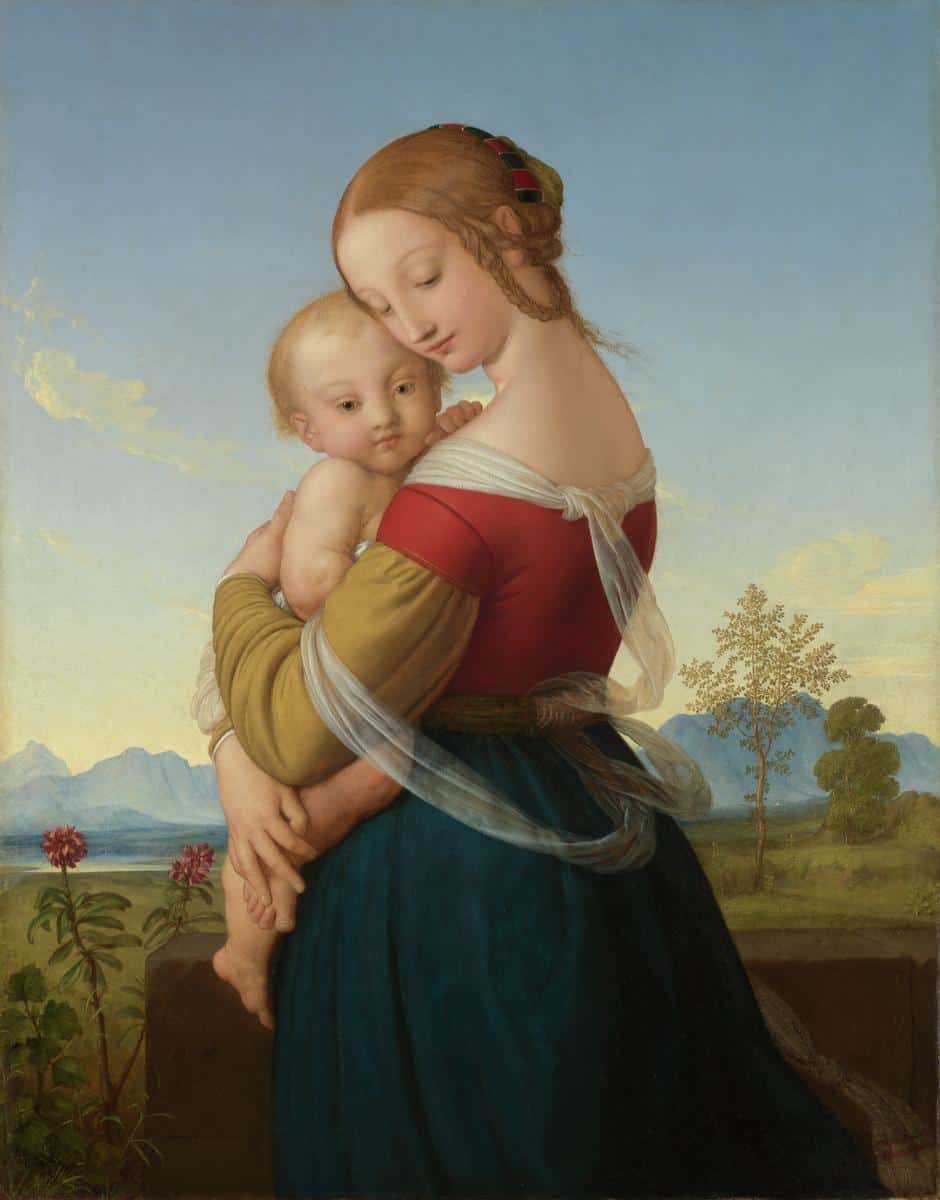
The Mother-Son Cult and Catholicism
One of the central points of controversy lies in the potential parallels drawn between the veneration of Semiramis and elements of Roman Catholicism. Critics and proponents of these parallels have cited various aspects of Catholic tradition, such as the veneration of Mary, the mother of Jesus, as bearing resemblance to the ancient veneration of Semiramis. Both Mary and Semiramis have been regarded as maternal figures with divinely ordained qualities.
However, while both figures may show surface-level similarities in terms of reverence, their theological underpinnings and the focus of devotion differ significantly. Roman Catholic doctrine affirms the unique and exclusive role of Mary as the mother of Jesus, emphasizing her role in salvation history as the Theotokos, or “Mother of God.” This veneration of Mary is rooted in Catholic theology that developed after the time of Christ and should not be conflated with the ancient pagan practices that revered Semiramis as a deity thousands of years before Christ.
The veneration of Semiramis was deeply entrenched in the religious milieu of ancient Mesopotamia, whereas the veneration of Mary emerged within the Christian tradition, rooted in the teachings of the New Testament and the early church. One should draw comparisons between practices from different historical and religious contexts with care, recognizing the distinct theological foundations and intentions behind these veneration practices.
While the worship of Semiramis has influenced various cultures and religious traditions, one should approach these claims by understanding Mary’s place within Roman Catholicism.
Semiramis in Pagan Religion
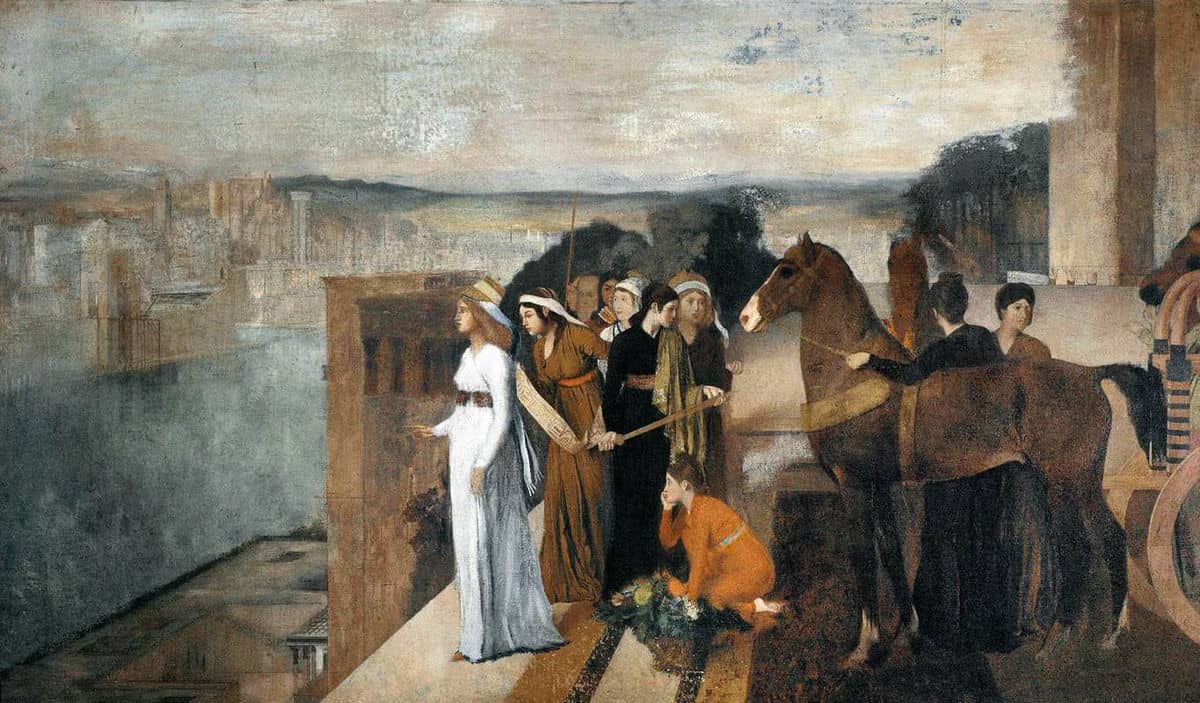
The connection between Nimrod and Semiramis becomes even more intriguing when one delves into the role of Semiramis in ancient Babylonian and pagan religions.
Semiramis, often described as a legendary queen of ancient Assyria and Babylon, holds a pivotal place in paganism. Her prominence lies in her association with the worship of Tammuz, a deity who symbolizes rebirth and the cyclical nature of life, death, and resurrection. Tammuz was regarded as the son of Semiramis and, according to myth, was born through miraculous means, further establishing the mother-son cult that underpinned much of ancient paganism.
The Mother-Son Cult
The mother-son cult was a recurrent theme in various pagan religions across the ancient world. It involved the worship of a mother goddess figure and her divine son, often tied to the agricultural cycles and the changing seasons. This concept emphasized the nurturing, life-giving aspect of the mother goddess and the perpetuation of life through the birth and rebirth of her divine son. While such a motif existed in many cultures, one should distinguish between the broader concept of the mother-son cult and the specific claim that Nimrod married his mother.
In the case of Semiramis, her elevation to divine status as the Queen of Heaven and her connection with Tammuz added layers of complexity to the religious practices of ancient Babylon. The worship of Semiramis and Tammuz included rituals, sacrifices, and even mourning for Tammuz’s annual death and subsequent resurrection (Ezekiel 8:14), echoing the themes of life and rebirth intrinsic to the mother-son cult.
However, the presence of Semiramis in pagan religion, and even her association with a mother-son cult, does not, by itself, confirm the controversial theory of her marriage to Nimrod. While Semiramis undoubtedly played a significant role in ancient religious practices and her deification as the Queen of Heaven appears well-documented in historical records, the specific claim of her marriage to Nimrod remains a debated and interpreted topic.
Problems with this Theory
It is important to note that many scholars, theologians, and historians have met the claims in Hislop’s The Two Babylons with skepticism and criticism. Critics argue that Hislop’s work relies heavily on selective historical connections and may oversimplify complex religious and cultural developments. Furthermore, the theory that Nimrod married his mother remains a matter of debate and interpretation, with limited direct biblical support.
The Bible does not mention who Nimrod’s mother was. Nor does it mention anything about Nimrod having a wife. The Bible does not mention Semiramis either, but Jeremiah 44:19 mentions ‘the queen of heaven’ once, referring to a pagan goddess people worshiped. However, there is no evidence that this is specifically Semiramis and there is nothing that ties “the queen of heaven” to Nimrod.
From a Christian perspective, approach this theory with caution. Consider both the historical evidence, the context, and the teachings of the Bible. While the connections Hislop draws are intriguing, they do not necessarily provide conclusive evidence that Nimrod was the husband of Semiramis. Christians need to exercise discernment when evaluating historical theories.
Nimrod’s Death
The mystery surrounding Nimrod extends to the circumstances surrounding his death, which, like many aspects of his life, is a subject of historical speculation. The Bible itself does not provide explicit details regarding the death of Nimrod. This lack of information in the biblical narrative has led to various interpretations and theories regarding the circumstances surrounding his death.
The ambiguity surrounding Nimrod’s death leaves room for interpretation and debate. Many hypothesize that it could have been Shem, Noah’s son, or Esau, Abraham’s grandson, who killed Nimrod. Other legends say that it was a tiny gnat or mosquito that brought down the great ruler by flying into his brain and driving him mad. These are just a few examples of stories related to Nimrod’s death. However, many more speculations and myths have emerged.
In the broader context of ancient history, the details of Nimrod’s death remain elusive. Some sources and traditions have suggested that he met a violent death, potentially due to conflicts or political rivalries, given his powerful and influential role in his time. However, these are speculative assertions, and there is no definitive historical record to confirm or refute such claims.
Conclusion
Certain enigmatic figures in history, such as Nimrod, draw controversies and questions. The same has occurred with the assertion that Nimrod married Semiramis, a woman believed to be his mother. While the theory has garnered attention, it remains a subject of debate and interpretation. For Christians, it is important to seek truth and wisdom in the light of God’s Word. In this pursuit, the teachings and example of Jesus Christ are central, providing guidance and a framework for understanding the entirety of the biblical narrative, including the stories from the Old Testament. The story of Nimrod and Semiramis, whether fact or fiction, is not based on scripture. They may be intriguing possibilities to ponder, but only so far as they do not hinder the pursuit of more important matters of the faith.
In this pursuit, the teachings and example of Jesus Christ are central, providing guidance and a framework for understanding the entirety of the biblical narrative, including the stories from the Old Testament.
What do you think? Please share your thoughts below.
Too often, people answer faith questions with dogmatic certitude and neglect the historic diversity and complexity of Christian ideas. The Questions Project is a resource that responds to questions about faith, history, and scripture in a way that honors the historic diversity and complexity of Christian thought. But, this is a work in process and we need your help. Please provide feedback. We are particularly interested in knowing what we have missed and how we can improve our responses. Please keep all comments kind or risk deletion.

